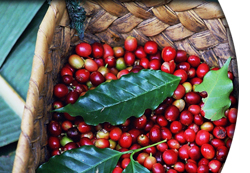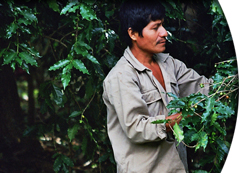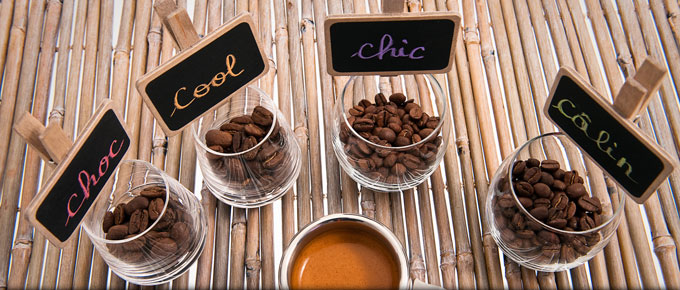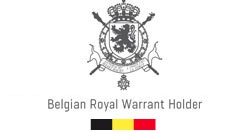CHOOSE YOUR COFFEE
The taste of a coffee depends primarily on its origin and its variety. But other elements are also important: the way it was harvested, the roasting method and wrapping.

ARABICA OR ROBUSTA
Arabica contains 44 chromosomes and robusta only half this figure. The difference is seen in the aromatic richness of the coffee. There can be more than a thousand aromatic components in coffee. Arabica is therefore much more interesting than robusta, both from an aromatic quantity and quality viewpoint.
Another parameter: caffeine. Robusta contains more caffeine (between 1.5 and 4 %) than Arabica (between 0.3 and 1.5 %). Finally, since it is more difficult to grow arabica, it is slightly more expensive than robusta.

HARVESTING AND TORREFACTION
Arabica is picked by hand, berry by berry, at its optimum ripeness, and this gives a much better coffee than that picked mechanically. Plantations may contain just a few dozen shrubs, several hundred, several thousand or even several million. In the first instance, everything will be done by hand and in the latter cases, mechanisation is a necessity.
Also, only traditional torrefaction lasting 20 minutes at a temperature of 220°C allows the coffee to develop its full aroma. In general, the wrapping contains no indication of the type of roasting, unless it was actually done traditionally.
SOLUBLE AND FREEZE-DRIED COFFEE
When ingested, the waxes and fats in coffee set off the secretion of gastric and pancreatic juices. The effect of these sugars is to decompose milk proteins. By drinking milky coffee, the subject sets off this reaction automatically and some people find it hard to digest. This is why low-fat coffees have been developed which allow the easy digestion of milky coffee and coffee on the whole.
As for soluble coffee: this is made by making a concentrated filtered coffee which is then atomised (pulverised as finely as possible) into the top of a tower. At the same time, hot air is blown into the bottom of the tower; when the two bodies meet, the water in the coffee evaporated and the soluble powder remains. Nowadays, soluble coffee does not contain any added chemical products. However, the fact that it has been in contact with hot air mean it is burnt, which lends it a toffee taste that cannot be avoided.
Similarly, to obtain freeze-dried coffee, the coffee is concentrated and frozen at -40°. The coffee bricks thus obtained are placed in a freeze-drying chamber which is under vacuum. When the air is sucked out, the water is sublimated (it changes directly from solid to gas!) The soluble powder then remains. The coffee is not burnt and the quality of its taste is therefore better preserved than when using the previous method.
CAFFEINE AND DECAFFEINATED COFFEE
Caffeine was discovered and isolated by Runge in 1819. The duration of caffeine (the time between the ingestion and the elimination of the product is 8 hours, with a peak after 5 hours. This explains why drinking coffee at 5 p.m. makes it difficult to sleep whereas coffee drunk just before bedtime will not be a problem.
Caffeine is the only soluble element in coffee. The more water passes through coffee and the longer the filtering lasts, the more caffeine is extracted. In other words – and this seems paradoxical – a “short” coffee contains very little caffeine whereas a “long” coffee contains much more. To claim the label «decaffeinated», a coffee must contain no more than 0.01 % caffeine.
The decaffeination process is carried out on green coffee beans and there are three different methods:
the traditional method, using solvents (methylene chloride or trichlorethylene) the Zosel method based on carbon gas or propane decaffeination using water, which is obviously the most natural method but also the most expensive. There are only two factories in Europe that decaffeinate coffee.
 My Cart
My Cart 








